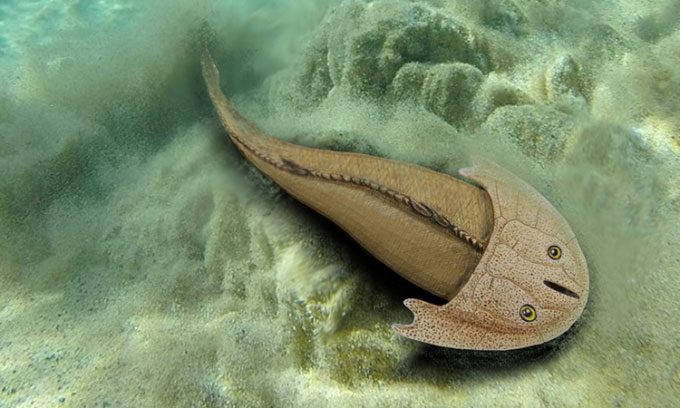Chinese paleontologists have discovered the remains of a uniquely shaped fish that lived up to 436 million years ago.
According to a report from the Natural Resources and Urban Planning Office of Chongqing City on March 4, the ancient creature, named Binhai Yongdong armored fish (Yongdongaspis littoralis), was found exclusively in what is now East Asia and primarily inhabited shallow marine environments along the coast.

Reconstruction of Binhai Yongdong armored fish. (Photo: Xinhua).
The 436-million-year-old skeleton was discovered in the Tushan Autonomous County in Chongqing, southwestern China. The partially exposed fossil reveals a hard bony layer on the fish’s head, giving it the appearance of wearing a crescent-shaped helmet, as described by the research team in a publication in the journal Acta Geologica Sinica.
Chen Yang, the lead author of the paper and a senior engineer at the Chongqing Institute of Geology and Mineral Resources, stated that this new discovery may represent several transitional states in the evolutionary process of the Galeaspida class.
The Silurian Period, during which the armored fish existed, was a significant time in Earth’s history. During this period, the planet underwent intense geological tectonic movements, leading to the formation of red marine sediments. Due to the scarcity of discovered fossils, the precise geological age of these red sediments remains an unresolved mystery.
Consequently, the Binhai Yongdong fish fossil in Chongqing provides new evidence regarding the division and correlation of red sediments in southern China, according to Zhu Min, a professor at the Institute of Paleontology and Vertebrate Paleontology of the Chinese Academy of Sciences (CAS).


















































